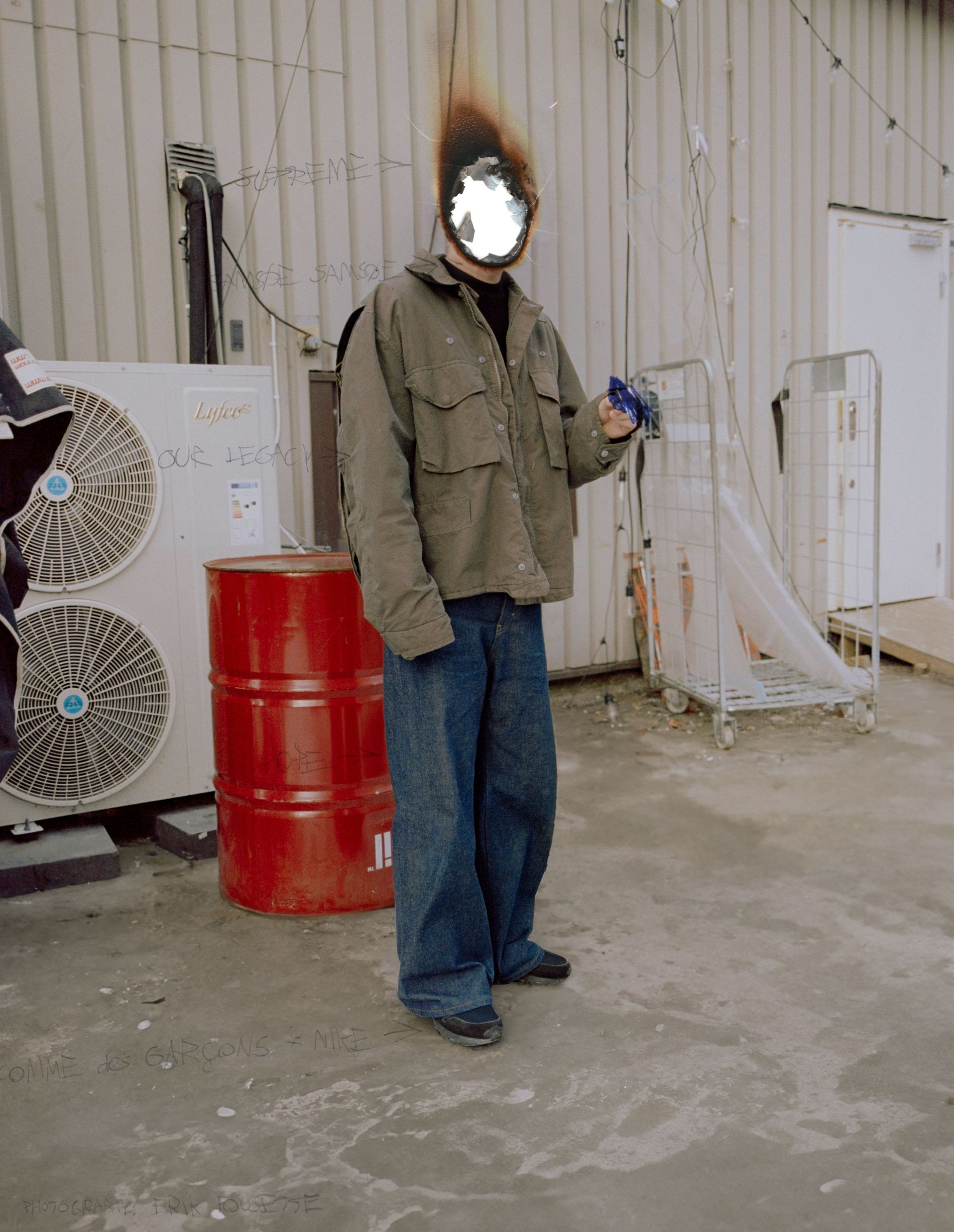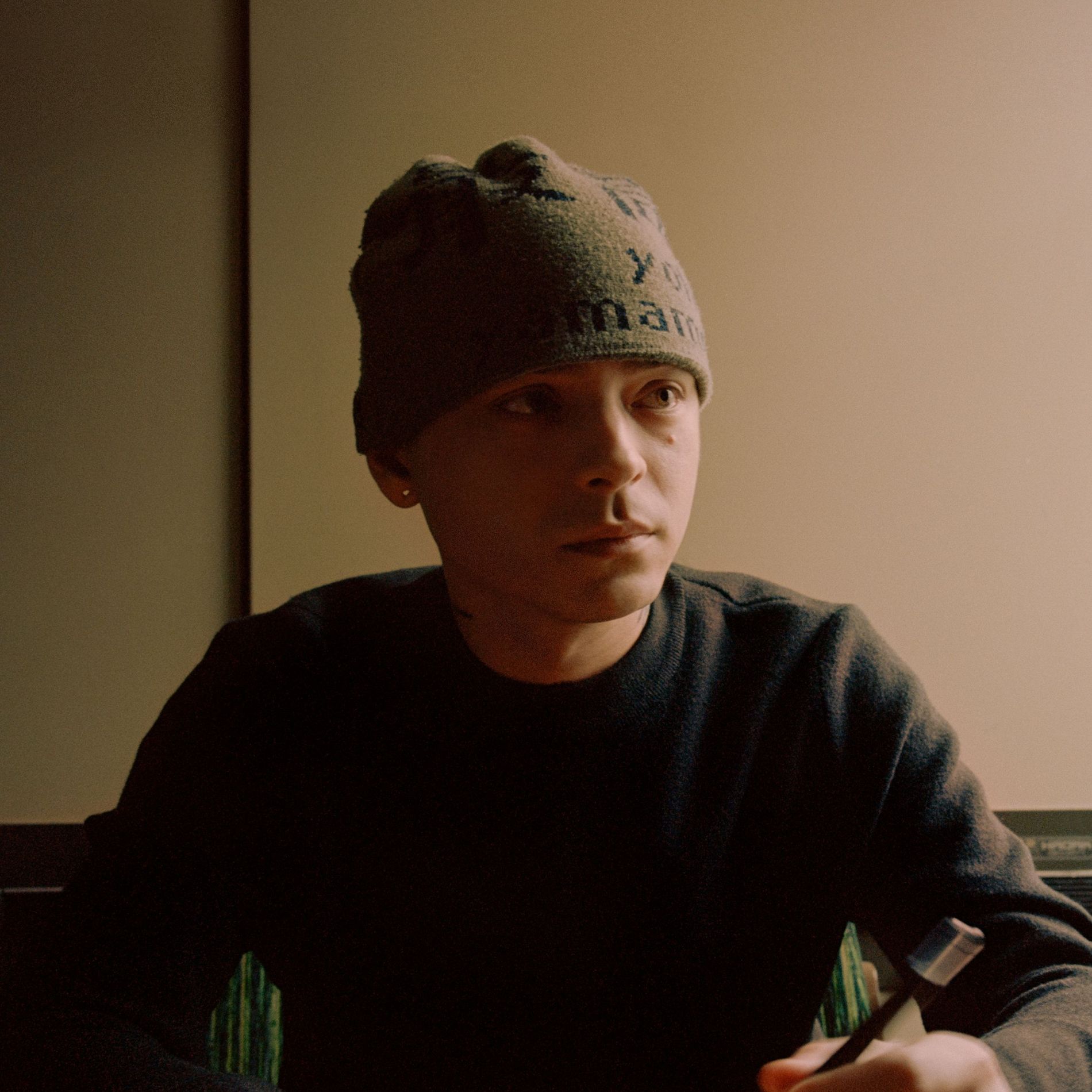During the pandemic, Swedish multidisciplinary artist Viktor Hammarberg’s cheeky creations leapt from his own Instagram onto the album covers of some of the world’s most celebrated artists. Between commissions for Rosalía and Peggy Gou, Hammarberg finds time to make an exclusive artwork for the pages of Vogue Scandinavia
You’ve seen Viktor Hammarberg’s work even if you don’t know it. It has graced the album covers of Rosalía, SZA, Steve Lacy, The Weeknd and Cardi B, meaning his art is viewed as often as someone hits play. “I didn’t set out to make album covers,” he says. “I studied graphic design, and was doing marketing for a restaurant when the pandemic hit. I realised the industry was going to take a hit, so I started posting my designs on Instagram.”
Hammarberg’s account quickly racked up followers. “When I lost my job, I had just hit 10,000. I thought, ‘Maybe this could be something’, and poured everything into my art.” Before long, he started to get requests from musicians. The first album art Hammarberg made was for Swedish group Tjuvjakt. “I thought it was the biggest thing that could happen to me, and then two months later, Rosalía got in touch,” he says.
Since then, he’s barely come up for air. “Every time I think about taking a breath, I get a brief that’s too big to turn down.” Still, it’ll be hard to compete with winning the Latin Grammy for best artwork, which he nabbed for his work on Rosalía’s Motomami. “Just seeing that I was nominated felt like winning. Then, hearing my name being called, getting messages saying, ‘You won, you won’, it didn’t feel real.” Even more surreal was receiving the physical award at his home. And while Hammarberg is in high demand among the world’s most celebrated artists – currently he’s working with Peggy Gou on her next project – he hopes to soon see his work on a gallery wall.

Photo: Viktor Hammarberg
As for his aesthetic, much of Hammarberg’s influence comes from his nomadic upbringing. Born and raised in Sandviken until he was nine, every decade meant a new home for Hammarberg. “Each place is like a different chapter, segmented as clear categories with memories living in each box,” he says, noting that the 1990s are Sweden, the 2000s Beijing, and Singapore the 2010s. It was in the Southeast Asian city state where Hammarberg began to relish nostalgia and examining existing concepts through a satirical lens. “Scary Movie was the shit back then. It fascinated me that you could take something serious and make fun of it,” he says.
“I like to say I make ‘serious parodies’ – taking a familiar concept and turning it on its head,” he says. Take, for instance, his cover for Rosalía and The Weeknd’s ‘La Fama’ for which he burned off the faces of two of the biggest artists on earth. He describes it as “a play on fame”. “That’s always my goal, to embody the subtle meaning behind the music. To strip it down to its essence,” he says. “Sort of brutalist in a way, I prefer to hone in on a few simple details.”

Photo: Viktor Hammarberg
This original work for Vogue Scandinavia is a play on the smiley. A double take reveals snake fangs and a forked tongue. “I was trying to illustrate the pursuit of happiness, and the role of social media where smiles eat up our attention. With the irony that the smiles disappear as soon as the picture’s been taken,” Hammarberg says. “People try to achieve the status of being happy through life hacks and books and the dream job. But once you get there you never feel the satisfaction you expected.”
Behind the artist everyone is clamouring for is a guy who knows imposter syndrome well – someone who feels most comfortable working at night when everyone else is asleep. “It’s fun, but it’s a fine balance,” he says. “I think most creative people have those thoughts of ‘what makes me special, what gives me the right to be here?’ The peace comes when I feel things click on a project, and I know I’m doing something I love, that I’ve made something I’m proud of.”
Photographer: Erik Pousette
Talent: Viktor Hammarberg
